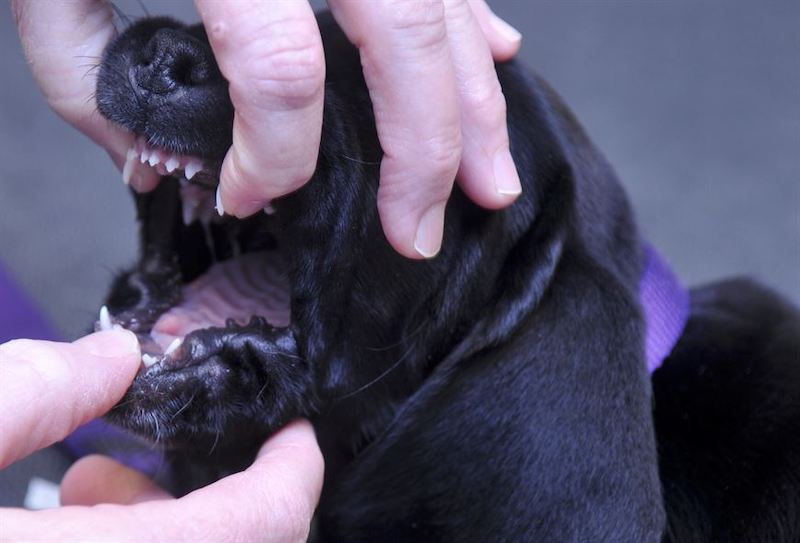Puppy Body Handling and Why It’s Important
Is there a puppy you know that growls and pulls away when someone touches their feet? Or, have you ever been to the vet and wondered why the dog next door is growling, barking and whining during their exam? What about the dog that is sensitive about being hugged? Why is this dog more sensitive than another? One reason could be that these dogs were not socialized in handling as puppies.
Handling exercises are one of the most important ways to prevent sensitivity and reactivity in your dog. During their critical socialization period, it’s important that you do a number of exercises that prove to your dog that it’s fun to have their bodies moved, touched or squeezed. The benefits of these exercises include a dog that offers their paw for a nail trim, a dog that tolerates the confinement of a hug or a dog who is able to bounce back after a dental exam.
Every puppy has a critical socialization period that is between 2 and 12 weeks of age with the most important week being week 9. During this period, all forms of socialization must take place. You should not only be doing handling exercises but also exposing your puppy to all kinds of environments. These include introducing the pup to different types of people, (ie. Short, tall, big and small) different objects, (skateboards, cars, trucks, construction equipment etc.) and
A few examples of handling exercises are as follows:
Pet the puppy with gentle strokes all over it’s body.
Softly hold and squeeze every paw, going slowly as they may be sensitive.
Gently pull back the puppy’s ears and peak inside. The puppy will probably move his head away but keep trying.
Give belly rubs! Most puppies love this!
Softly pull the puppy’s tail. Puppies are naturally very protective of their tails and genitals so do this at your puppy’s own pace.
Gently open the puppy’s mouth and look inside.
Softly hug the puppy, making sure you give different levels of stiffness.
Softly restrain the pup, pulling his body close to yours and keeping the whole body still.
After completing these exercises, one at a time, for a few minutes each, make sure to follow up with a tasty treat that you know your puppy will love. This teaches your puppy that when a child handles them in this way or if they are examined at the vet or groomer, he will remember the experience as being a fun one and be more willing to do it again.
It’s also a good idea to have one-person handle at a time. This is to prevent your puppy from becoming overwhelmed. In order for your puppy to welcome this type of touch well into his older years, it’s a good idea to practice this routine at least twice a day especially during their critical socialization period.
Also, if it seems like your puppy is becoming stressed and no longer wants to participate, it’s okay to take a break and come back to it later. Take a walk with your puppy to get his mind focused on something else and come back to it when you both are willing to work again. Be as gentle as you can. If you accidentally hurt your puppy, no big deal, just reset and try again. With consistent practice and lots of extra love, your puppy will be a master in allowing all types of people to interact and handle his body in a multitude of ways.
Photo 1:
Toronja Azul [CC BY 2.0 (https://creativecommons.org/licenses/by/2.0)], via Wikimedia Commons
Photo 2:
U.S. Air Force photo/Senior Airman Amanda Morris
https://www.barksdale.af.mil/News/Photos/igphoto/2001325403/


